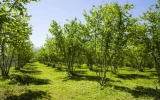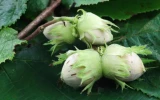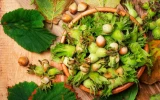6 Most Common Hazelnut Tree Types (With Pictures)
Hazelnuts, known for their rich flavor and essential nutrients, come from a variety of trees, each with its own unique characteristics. In this article, we'll explore the most common types of hazelnut trees, accompanied by vivid images to help identify them.
The six common hazelnut trees are American Hazelnut (Corylus americana), European Hazelnut (Corylus avellana), Turkish Hazelnut (Corylus colurna), Beaked Hazelnut (Corylus cornuta), Giant Hazel (Corylus maxima), and Asian Hazelnut (Corylus heterophylla).
The European variety is the primary commercial species, although most of them are edible. Let's get to know the different types of hazelnut trees, so you can start selecting the perfect variety to meet your culinary and decorative needs.
Summary
- The European Hazelnut (Corylus avellana) is the most widely grown hazelnut variety. It produces edible nuts known as filberts that are prized for their oil content.
- The Turkish Hazelnut (Corylus colurna) thrives in clay soils, unlike some other hazelnut varieties. It can grow 40-80 feet tall and has a unique pale grey, corky bark texture.
- The Beaked Hazelnut (Corylus cornuta) is native to North America and can be identified by its distinctive husk that encloses the nut in a beak-like projection.
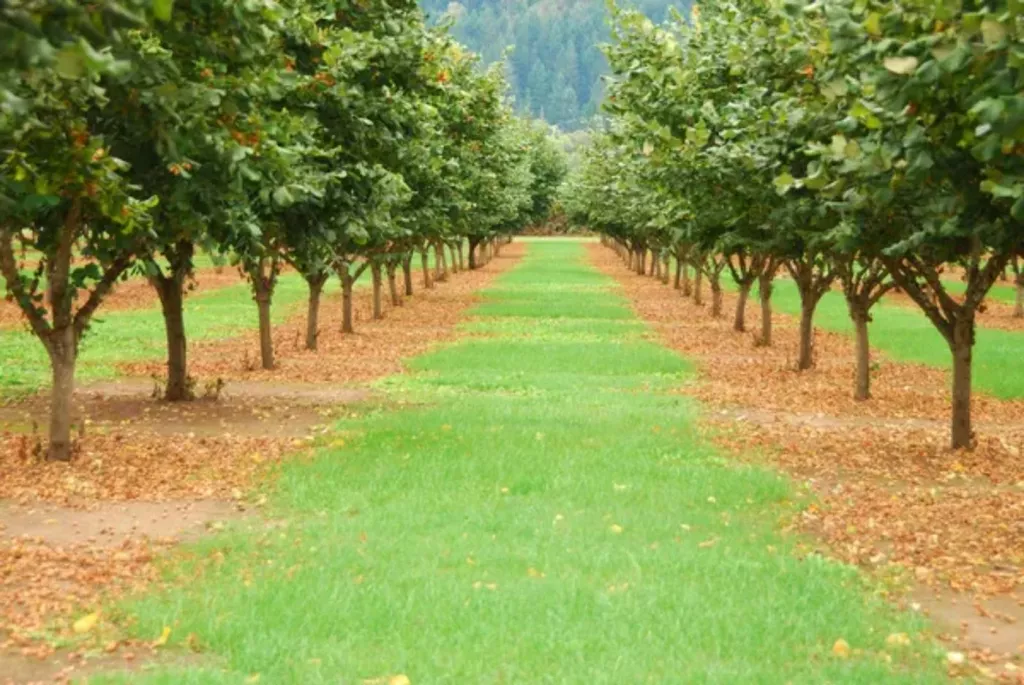
On this page:
The table below summarizes the most common types of hazelnut trees:
| Tree Type | Scientific Name | Native Region | Key Characteristics |
|---|---|---|---|
| European Hazelnut | Corylus avellana | Europe | Deciduous, edible nuts, height 3-8m |
| American Hazelnut | Corylus americana | North America | Oval leaves, edible nuts, multi-stemmed |
| Turkish Hazelnut | Corylus colurna | Southeastern Europe, Asia Minor |
Height 40-80ft, pale bark, broadly oval leaves |
| Giant Hazel | Corylus maxima | Southeastern Europe Southwestern Asia |
Height 12-15ft, large rounded nuts, requires cross-pollination |
| Beaked Hazelnut | Corylus cornuta | North America | Distinctive beaked husk, fuzzy leaves |
| Asian Hazelnut | Corylus heterophylla | China, Japan, Korea, Siberia | Height up to 7m, smooth bark, sweet nuts |
European Hazelnut
Scientific name: Corylus avellana
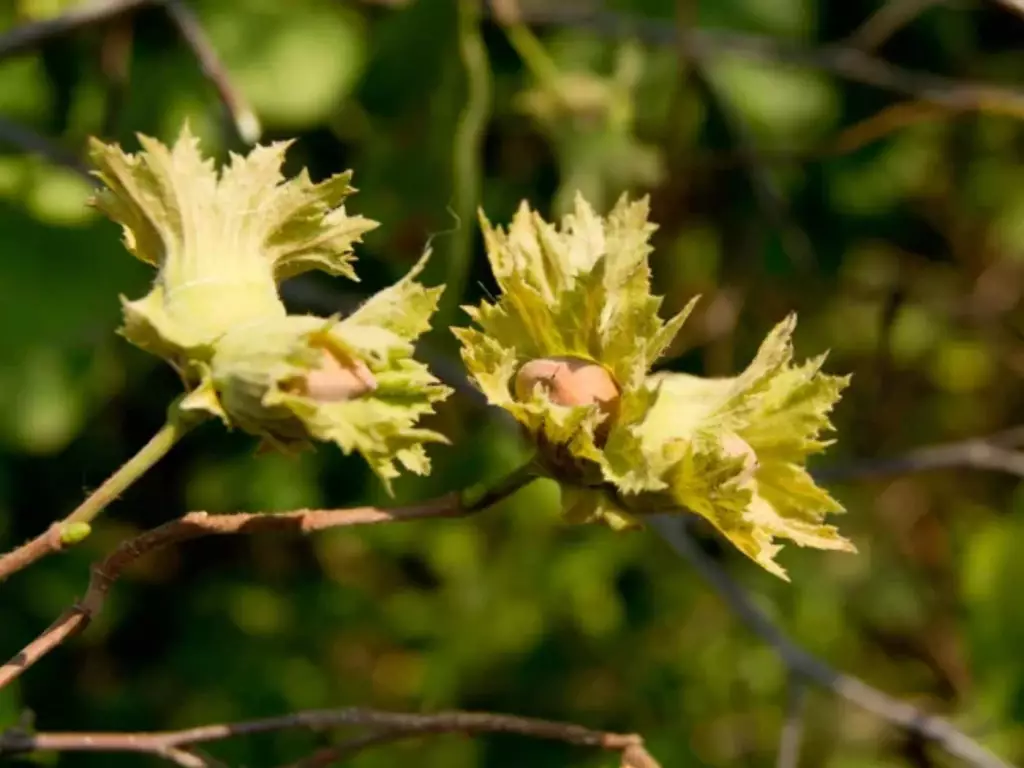
European Hazelnut, also known as Corylus avellana, is a beloved species native to Europe. You'll recognize it as the traditional Common Hazel found across the continent. Its ability to adapt to a variety of soils makes it quite versatile, although it flourishes best in well-drained soils.
The leaves of this plant are rounded, sporting a characteristic double-serrate margin, and are softly hairy on both surfaces. Come spring, you'll witness the unique display of the male flowers, commonly known as catkins, which dangle elegantly, releasing pollen into the air.
European Hazel is not just a pleasure to look at; it produces edible nuts known as filberts, which are encased in a short, leafy husk. Two varieties of this hazelnut type produce a bountiful yield of hazelnuts per harvest.
These nuts are highly regarded for their oil content. The tree appreciates plenty of sunlight to bear the tasty fruit that ripens by autumn.
- Leaves: Deciduous, rounded
- Fruit: Edible nuts (filbert)
- Preferred soil: Well-drained
In terms of growth, your European Hazel can reach a height of up to 15 meters but typically grows between 3-8 meters. It's not just the height; the spread is also impressive, making it a substantial presence in your garden.
American Hazelnut
Scientific name: Corylus americana

American Hazelnut, also known as Corylus americana, is a native treasure of North America. This deciduous shrub thrives in full sun and prefers well-drained soils. Recognizable by its multi-stemmed growth and oval leaves, it fits perfectly into a natural landscape.
American Hazelnut produces male and female flowers on the same plant, with the males presenting as yellow catkins. The female flowers are smaller and can be easily missed. Your American Hazelnut will need a friend for cross-pollination; plant several for best results.
- Husk: Your hazelnuts will be hidden in a husk that reveals a rounded, rich nut inside.
- Bark: Mature hazelnuts showcase a bark that adds winter interest to your yard.
- Suckers: They often form suckers, leading to a rounded shrub appearance.
If you're in North America, this shrub could be an excellent choice for your garden. Not only does it adapt to a range of climate conditions, but it also attracts wildlife, enriching your local ecosystem.
Keep your soil well-drained, give the plant some sunny space to grow, and watch as it adds a rich texture to your green space. In 3-5 years, this species of hazelnut will begin to produce its first fruits.
Turkish Hazelnut
Scientific name: Corylus colurna
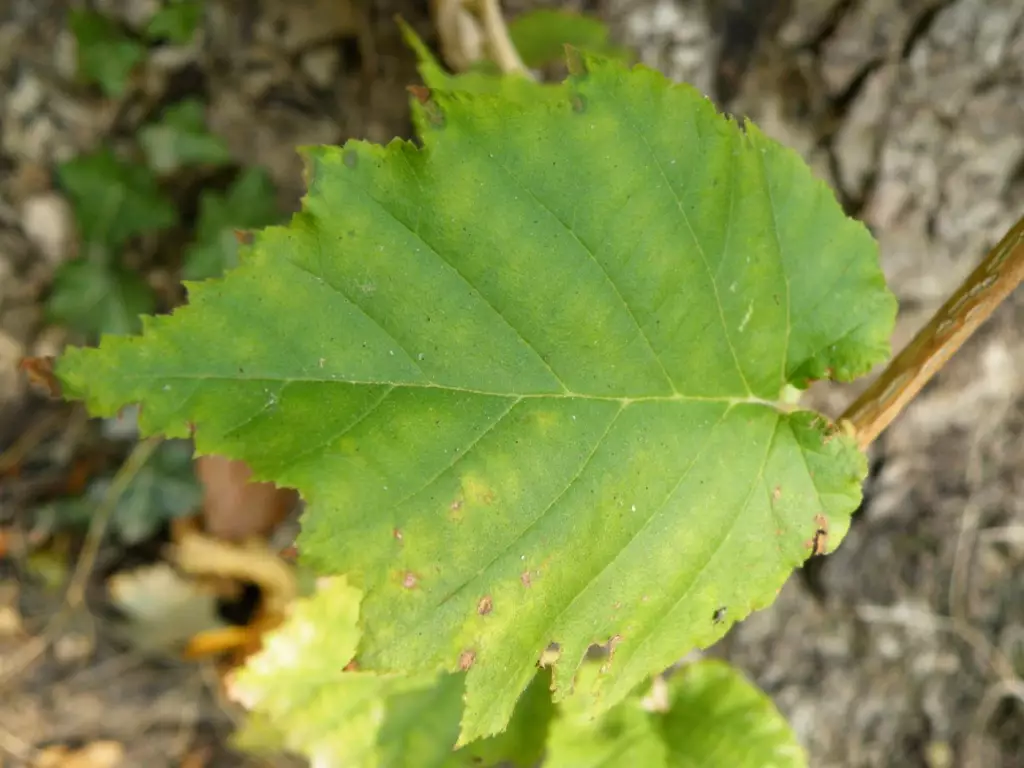
Turkish hazelnut, also known as Corylus colurna, is native to regions of Southeastern Europe and Asia, specifically Asia Minor, with Turkey being the top hazelnut producer worldwide. A distinguishing feature of this tree is its preference for moderate conditions and it thrives particularly well in clay-based soils.
-
Height & spread: You can expect this hazelnut variety to achieve heights between 40 to 80 feet with a spread of 30 to 50 feet. Its growth form starts with a slender conical shape, maturing into a broader, more robust structure.
-
Bark & leaves: The tree's bark is an eye-catching pale grey-buff, adorned with a thick, corky texture. Its leaves are large, broadly oval, and provide a lush green canopy during the summer months.
-
Climate & care: Turkish hazelnut grows well across zones 4 to 7, signaling its adaptability to various moderate climates. It requires medium water and thrives in both full sun and partial shade, making it a low-maintenance option for your garden.
To sum up your care routine, ensure the tree has enough space to grow, provide regular watering, and plant it in a spot with ample sunlight to partial shade. See this article to find out how many hazelnut trees are ideal in a hectare.
This deciduous tree will reward you with its impressive stature and unique bark texture, enhancing your landscape with a touch of Asia's natural beauty.
Giant Hazel
Scientific name: Corylus maxima
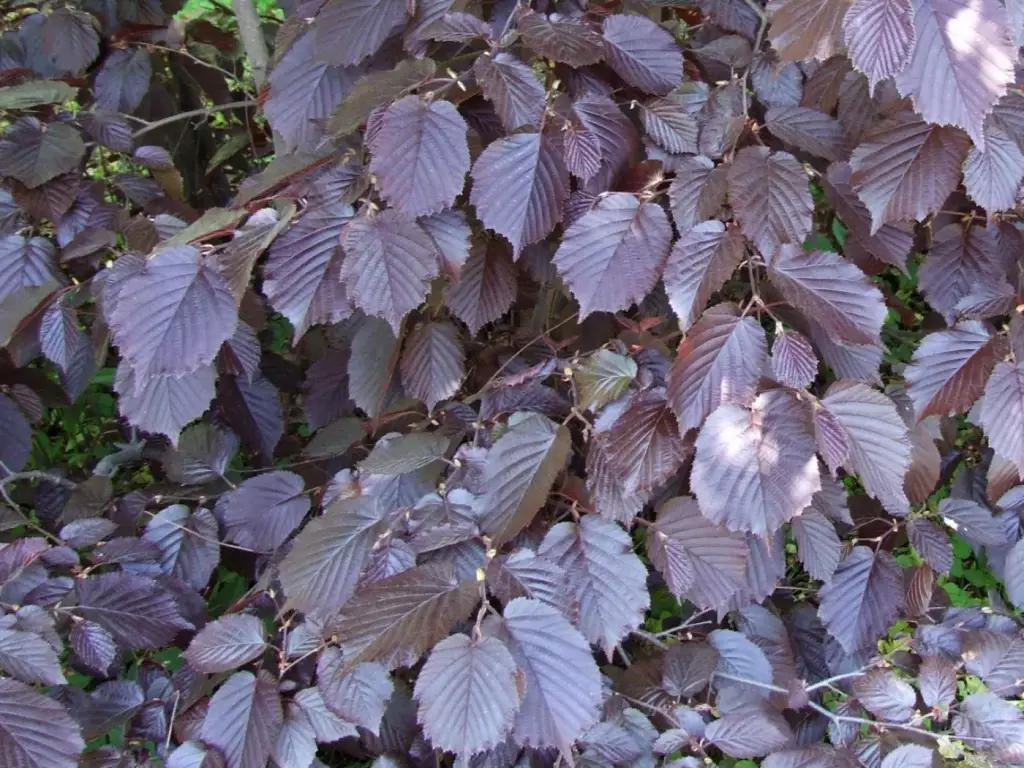
Giant Hazel, or Corylus maxima, is a member of the hazel family that you may find appealing for its large, edible nuts.
This deciduous shrub, native to southeastern Europe and southwestern Asia, can grow quite tall, reaching heights between 12 to 15 feet. Its stems are notable for their thickness, which can be up to 20 cm (8 in) in diameter.
The fruit of the Giant Hazel is a bit larger than what you might expect from a typical hazelnut. They are rounded and enclosed in a husk that has a fringed margin.
The nuts are prized for their size and flavor, typically harvested when they have developed a spherical shape, and are found nestled within the husk that becomes slightly moist at peak ripeness.
For successful pollination, you should be aware that Corylus maxima requires cross-pollination with other hazel varieties. The pollination process is vital for the development of the fruit, which happens in the spring when the male catkins release pollen to the female flowers.
Beaked Hazelnut
Scientific name: Corylus cornuta
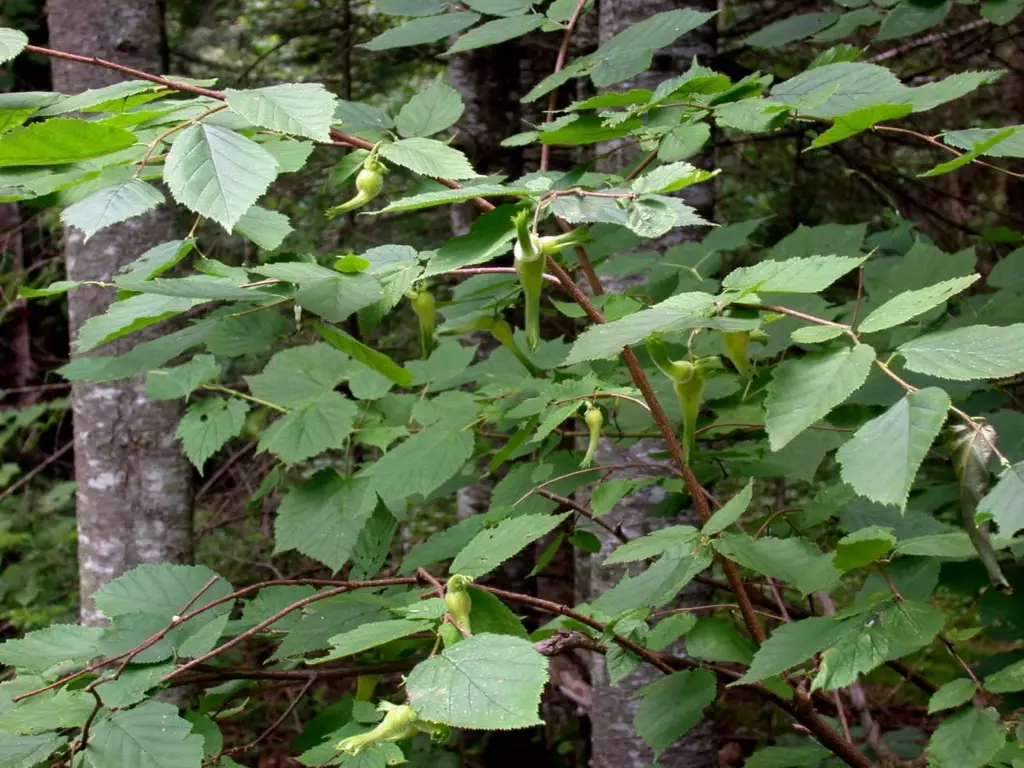
The Beaked Hazelnut, known scientifically as Corylus cornuta, is a deciduous shrub native to North America. You can find it thriving in woodlands and mixed forests, often forming thickets. Recognizable by its distinctive beaked husk enclosing the nut, this plant is as functional as it is ornamental.
Identifying characteristics
- Leaves: Rounded oval, fuzzy, with a double-serrated edge.
- Flowers: Male flowers are long catkins, while female flowers are tiny and red.
Habitat
- Light: Grows equally well in full sun or part shade.
- Soil: Adaptable to a variety of soil conditions.
In late summer, be on the lookout for the ripening nuts that are a favorite among local wildlife. The beaked hazel nuts are not only edible but also highly sought after by squirrels and jays.
If you're aiming to harvest some, it's a race to beat these creatures to the bounty. Your reward is a rich, sweet flavor that's well worth the effort.
Landscaping with the Beaked Hazelnut can add charm to your outdoor space. With its bright yellow autumn foliage, it's sure to make a statement.
Asian Hazelnut
Scientific name: Corylus heterophylla
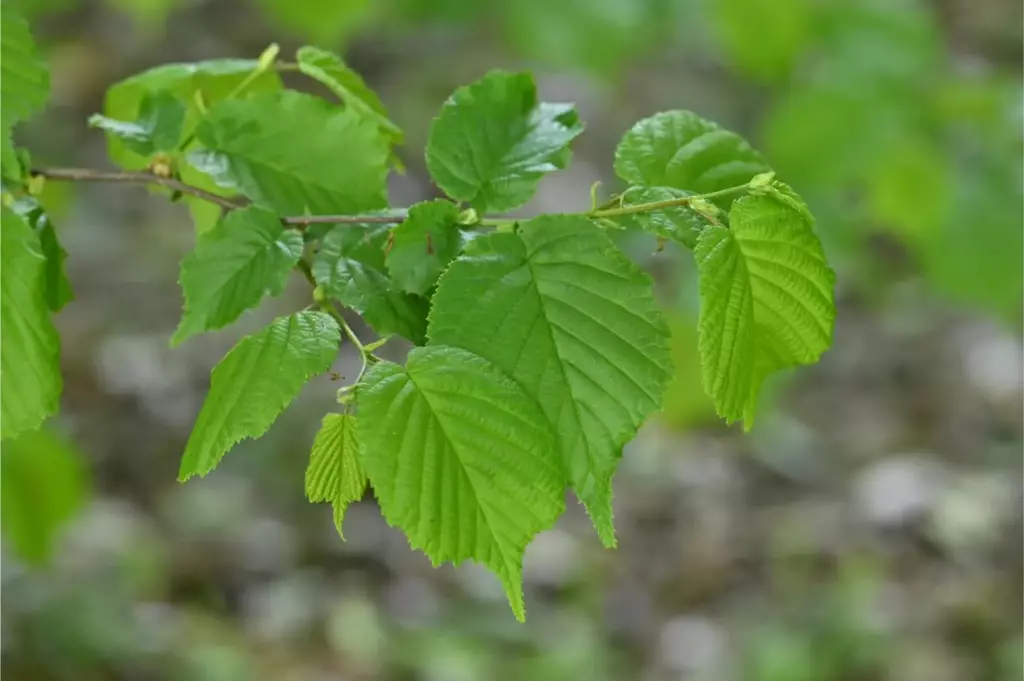
The Asian Hazelnut, known scientifically as Corylus heterophylla, is a charming species native to Asia. You'll find this species growing naturally in countries such as China, Japan, Korea, and southeastern Siberia. This deciduous tree or shrub is appreciated not only for its sweet nuts but also for its ornamental qualities.
Unique characteristics
- Height: Grows to 7 meters tall.
- Bark: Features gray bark with a smooth texture.
- Leaves: Boasts a serrate edge, with an alternate leaf pattern.
Reproduction
Flowers: Produces male flowers (catkins) that are penicillate, and small, red female flowers.
Nut characteristics
- Taste: The nuts are known for their rich and sweet flavor.
- Harvest: Nuts are typically ready for harvesting in early spring.
Cultivation
- Propagation: Known for suckering; may require you to prune occasionally to maintain its shape.
- Pests & diseases: Susceptible to filbert blight, so keep an eye out for signs of disease.
When growing hazelnut trees like the Asian Hazelnut, monitoring for pests, providing suitable care, and timely harvesting of the seed are key to enjoying these lovely trees and their bounty. For commercial harvesting of hazelnuts, check out this article for more useful information.
